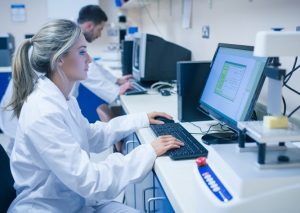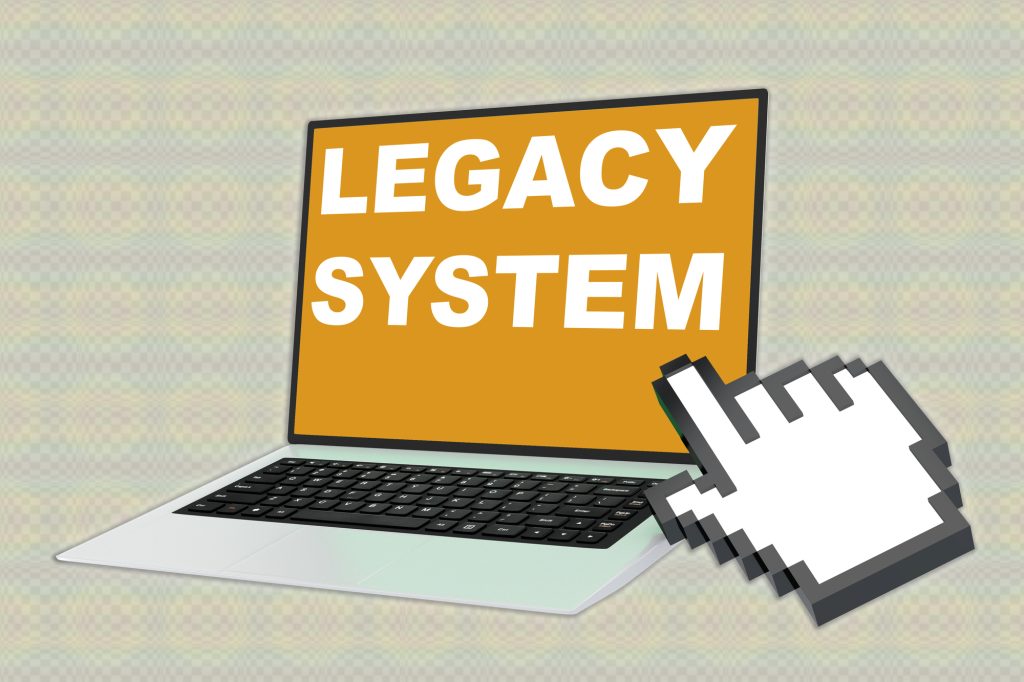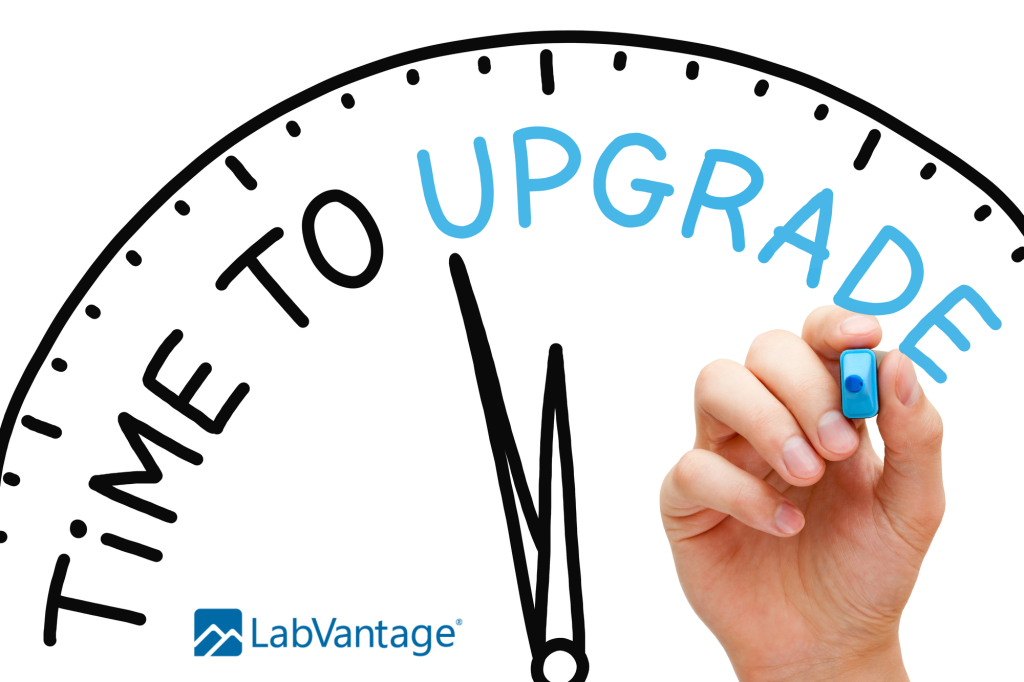 If you’ve ever lost a weekend upgrading a home computer, you know how difficult and frustrating it can be. So, it’s understandable if you’re reluctant to upgrade an institutional cornerstone such as a LIMS, which takes IT expertise and experience to an entirely new level.
If you’ve ever lost a weekend upgrading a home computer, you know how difficult and frustrating it can be. So, it’s understandable if you’re reluctant to upgrade an institutional cornerstone such as a LIMS, which takes IT expertise and experience to an entirely new level.
Corporate software upgrades demand significant investments in human resources, time and budget. When a decision-making platform such as a LIMS is the focus, it’s important to understand the pros and cons of upgrading. Despite the challenges, there are many reasons why your lab might want to upgrade their LIMS.
 Benefits of Upgrading a LIMS
Benefits of Upgrading a LIMS
From a technical standpoint, the most obvious benefits include gaining access to additional or improved features, bug fixes, configuration options, tech support, and enhanced security.
From a business perspective, labs choose to upgrade not because it is easy – but because upgraded software may allow the lab to function in a more transparent, cost-effective, and secure manner, and may improve profitability.
Labs that choose to upgrade their LIMS often improve operational efficiency by streamlining lab processes, fostering collaboration, leveraging interoperability, and providing a top-down approach to data transparency.
Avoiding System Security Risks
Beyond having access to the latest and greatest user experience, one of the most non-negotiable reasons for a laboratory to upgrade their LIMS is to minimize security risks. Labs that continue to use outdated platforms lack the latest safeguards and data integrity enhancements, such as single sign-on (SSO) and  multifactor authentication (MFA). Labs that do not upgrade run the risk of data breaches that would have been made impossible during maintenance releases, service packs, or upgrades.
multifactor authentication (MFA). Labs that do not upgrade run the risk of data breaches that would have been made impossible during maintenance releases, service packs, or upgrades.
Depending on an organization’s size and severity of the data exposure, a corporate data breach can cost upwards of $3.86 million to resolve. However, in the case of regulated environments such as those subject to cGMP, ISO standards and HIPAA compliance, data exposure may be severe enough to cause permanent damage. Security breaches like these not only cause extremely high fines, a loss of faith in the company, and a possible failure to bring life-saving therapies to market, but also may result in personal fines or in the case of HIPAA violations, imprisonment for up to 10 years.
Legacy LIMS also run the risk of being limited to compatibility with legacy support systems. These are often full of known vulnerabilities, such as those found in Flash, which was removed from browser support and replaced with the far more robust, secure, and lightweight HTML5 standard.
The addition of remote work and remote data access by employees during COVID-19 lockdowns has enhanced the need for improved security. Remote workers often use personal devices when away from the office, which may allow access to emails, contact lists, and laboratory or corporate data. As the lines between personal and professional life have blurred, enhanced security features to ensure data remains safe have become a very high priority.
 Upgrading your LIMS application regularly helps ensure that known vulnerabilities are closed in a timely manner, provides access to the latest security features, and helps to ensure that your data is protected — regardless of venue. Working with a trusted and knowledgeable LIMS vendor will help ensure ongoing security enhancements, support for the latest standards, and continued regulatory compliance across jurisdictions.
Upgrading your LIMS application regularly helps ensure that known vulnerabilities are closed in a timely manner, provides access to the latest security features, and helps to ensure that your data is protected — regardless of venue. Working with a trusted and knowledgeable LIMS vendor will help ensure ongoing security enhancements, support for the latest standards, and continued regulatory compliance across jurisdictions.
Shiny New Lab Tools!
Fifteen years ago, a fragmented lab life was all that existed. It was good enough to keep up with samples in a hand-written ledger, print out a copy of a gel photo, scan that into ImageJ for a density reading, and then copy and paste it into excel for a mathematical analysis. Remember that?
But that archaic workflow has given way to advanced LIMS/ELN/LES/analytics applications that provide platform solution for storing and manipulating laboratory data – whether in research, GxP, or clinical trial settings.
Advances happen considerably more often today than they did even five years ago. In today’s fast-paced world, applications must be as flexible and feature-rich as possible.
HTML5, which is used by LIMS applications such as LabVantage, has many additional benefits. It provides enhanced support for multimedia, doesn’t require plug-ins to run, is backward compatible with older versions of HTML, and dictates scripting for APIs used with JavaScript. This makes it easier for LIMS applications to interface with other browser-based tools such as ERP applications.
Users who choose not to upgrade their LIMS application often experience suboptimal performance because of a lack of compatibility or integrations with other new and exciting applications, such as Empower, state-of-the-art lab instruments, or the latest analytics software. There are even virtual reality applications that allow lab personnel to see contextual lab equipment and procedural information projected in real time on wearable screens.
Newer technologies, however, are often incompatible with legacy software – which by its nature lacks the flexibility and features necessary to take advantage of the latest changes in data flow. This may affect data speed, data organization, and even the types of data your lab can handle.
Application Convergence Provides Streamlined Workflows
To keep up, the industry’s top LIMS vendors have trended toward convergence among their component applications. This has yielded evolving ecosystems that work seamlessly together. For example, samples are automatically logged into a LIMS based on ELN entry findings or lab processes.
Feature convergence not only allows for a more streamlined and less-complicated workflow, but also reduces the workload across all application components, allowing your lab to stretch its licenses further by reducing operating costs and improving ROI.
New Tech Supports New Data Streams
A key requirement for supporting new technologies is being able to support new data streams effectively. It’s no longer enough for a LIMS application to provide a way to store numerical weights or volume measurements.
 The lab of the future is based on complex data streams that utilize even more complex data analytics. Today’s labs are already working with ever-growing data complexity from instruments that may pull both basic numerical data as well as large amounts of unstructured metadata to give contextual meaning to those measurements.
The lab of the future is based on complex data streams that utilize even more complex data analytics. Today’s labs are already working with ever-growing data complexity from instruments that may pull both basic numerical data as well as large amounts of unstructured metadata to give contextual meaning to those measurements.
For instance, in 2018, nearly half of all clinical trials collected genetic biomarker information specific to the drug being tested. That number was even higher — 73% — for clinical trials that dealt with oncology treatments. The increased accessibility and falling cost of bench sequencing strategies means biobanks for clinical trials are no longer simply holding basic patient and sample information. Instead, they’re being asked to extract and store complex genetic data.
Advanced data analytics engines are becoming a key differentiator among informatics offerings. LabVantage Analytics is one such option, leveraging machine learning and artificial intelligence to make data-driven decisions without the need for subjective interpretation from lab personnel.
These technologies allow a lab to collect data at its source, automatically feed information into the LIMS/ELN interface, and then transport it to an integrated analytics engine. The result is a nearly automatic control chain that defines data integrity and ensures analytical procedures are maintained from end to end.
Everyone Hates Bugs
We can’t discuss upgrades without discussing bugs! They tend to creep in at the most inopportune times.
Even though the goal of an application’s versioned release is to provide a flawless user experience, the reality is it is simply impossible to produce software as complicated as a LIMS application without having some anomalies. This inescapable fact makes the continued release of upgrades a necessary part of the application lifecycle.
It’s important to remember that bugs can be introduced into an otherwise stable application as an organization’s IT infrastructure — both hardware and software — change over time to meet the demands of an evolving corporate landscape. These changes can introduce basic incompatibilities that can be handled through an upgrade.
Finally, keep in mind that support for applications is never permanent. At some point, all applications become so outdated that they enter an “end-of-support” point that removes or restricts access to both technical support and software updates.
The Question is When – Not If – You Should Upgrade.
Although the decision to upgrade should never be taken lightly, a LIMS must be upgraded periodically to ensure your lab is able to match and outpace regulatory changes and technological advancements, while keeping your valuable data secure.
Deciding whether the rewards of upgrading outweigh the risk, time, and cost can be made easier by working with a LIMS vendor you trust. Ensure they have both LIMS and IT expertise as well as deep industry knowledge to help manage issues that arise.

